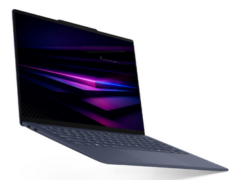- Home
- Mobiles
- Mobiles News
- Microsoft targeting $50 billion budget mobile market post Nokia deal
Microsoft targeting $50 billion budget mobile market post Nokia-deal

Before being acquired by Microsoft, Nokia had lost a considerable part of its market share to Samsung and Apple as it struggled to position itself among the fast changing needs of consumers.
Nokia had partnered Microsoft in 2011 to bring out the Lumia range of smartphones, based on Windows Phone operating
system (OS) of the Redmond-headquartered firm.
Windows Phone is already the fastest-growing ecosystem in the smartphone market and according to research firm IDC, it was the third biggest OS in fourth quarter of 2013.
(Also see: Windows Phone devices outselling Apple's iPhone in 24 markets: Microsoft)
"With the Nokia mobile phone business, Microsoft will target the affordable mobile devices market, a $50 billion annual opportunity, delivering the first mobile experience to the next billion people while introducing Microsoft services to new customers around the world," it said in a statement.
Low-cost handsets (sub Rs. 5,000 category) and smartphones (especially sub Rs. 7,000) from the stables of Asian handset makers like Huawei, ZTE, Micromax and Karbonn have been driving the growth in emerging markets of Asia and Africa.
In India, the smartphone market stood at 44 million units shipped, up from 16.2 million in 2012. The overall phone market stood at close to 257 million units in 2013, up 18 percent from 218 million units in 2012, according to IDC data.
(Also see: Micromax, Karbonn help push 2013 India smartphone shipments over 44 million mark)
Asked if the brand name of new phones would be changed, Microsoft in an emailed reply to PTI said it has "licensed the
Nokia brand for Mobile Phones for 10 years, as well as for the purpose of marketing Nokia branded smart devices for a limited time".
Analysts are of the view that Nokia is a big brand in India and Microsoft would want to leverage that and innovate on top of it.
"Nokia has a strong portfolio of devices across price points and of smartphones. We hope that Microsoft will continue to play across the spectrum, both high and the low-end as far as prices are concerned," IDC Senior Market Analyst Manasi Yadav said.
They are expected to continue with the Asha range as it is very popular in India and other markets and also comes at affordable price points, she added.
"Microsoft would also continue to focus on smartphones. The prices of smartphones should come down and we could see a
Lumia device in the Rs. 6,500-10,000 range. India is a price sensitive market and it is important factor for sales," Yadav said.
Microsoft is also expected to now aggressively market its Windows Phone platform after the completion of the deal, Gartner Principal Analyst Vishal Tripathi said.
"Microsoft has been in discussions with local OEMs for its Windows [Phone] platform. That will only get more aggressive," he said.
However, with the Chennai plant not being a part of the deal, its efforts could be affected.
Microsoft said it will work closely with a range of hardware partners, developers, operators, distributors and retailers, providing platforms, tools, applications and services that enable them to make "exceptional" devices.
"With a deeper understanding of hardware and software working as one, the company will strengthen and grow demand
for Windows devices overall," Microsoft added.
Catch the latest from the Consumer Electronics Show on Gadgets 360, at our CES 2026 hub.
Related Stories
- Samsung Galaxy Unpacked 2025
- ChatGPT
- Redmi Note 14 Pro+
- iPhone 16
- Apple Vision Pro
- Oneplus 12
- OnePlus Nord CE 3 Lite 5G
- iPhone 13
- Xiaomi 14 Pro
- Oppo Find N3
- Tecno Spark Go (2023)
- Realme V30
- Best Phones Under 25000
- Samsung Galaxy S24 Series
- Cryptocurrency
- iQoo 12
- Samsung Galaxy S24 Ultra
- Giottus
- Samsung Galaxy Z Flip 5
- Apple 'Scary Fast'
- Housefull 5
- GoPro Hero 12 Black Review
- Invincible Season 2
- JioGlass
- HD Ready TV
- Laptop Under 50000
- Smartwatch Under 10000
- Latest Mobile Phones
- Compare Phones
- Motorola Signature
- Vivo Y50e 5G
- Vivo Y50s 5G
- Realme 16 Pro+ 5G
- Realme 16 Pro 5G
- TCL Nxtpaper 70 Pro
- OPPO A6 Pro 5G
- Honor Power 2
- Lenovo Yoga Slim 7x (2025)
- Lenovo Yoga Slim 7a
- Realme Pad 3
- OPPO Pad Air 5
- Xiaomi Watch 5
- Huawei Watch 10th Anniversary Edition
- Acerpure Nitro Z Series 100-inch QLED TV
- Samsung 43 Inch LED Ultra HD (4K) Smart TV (UA43UE81AFULXL)
- Asus ROG Ally
- Nintendo Switch Lite
- Haier 1.6 Ton 5 Star Inverter Split AC (HSU19G-MZAID5BN-INV)
- Haier 1.6 Ton 5 Star Inverter Split AC (HSU19G-MZAIM5BN-INV)

















